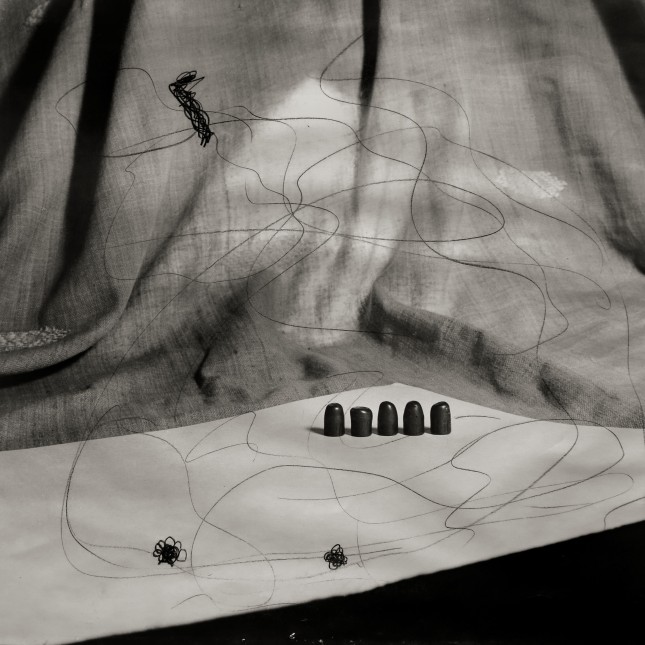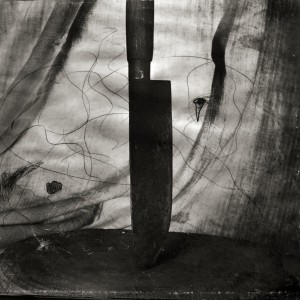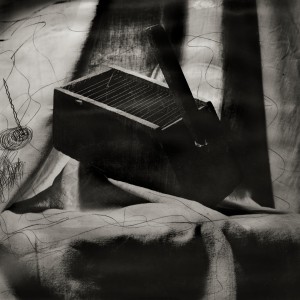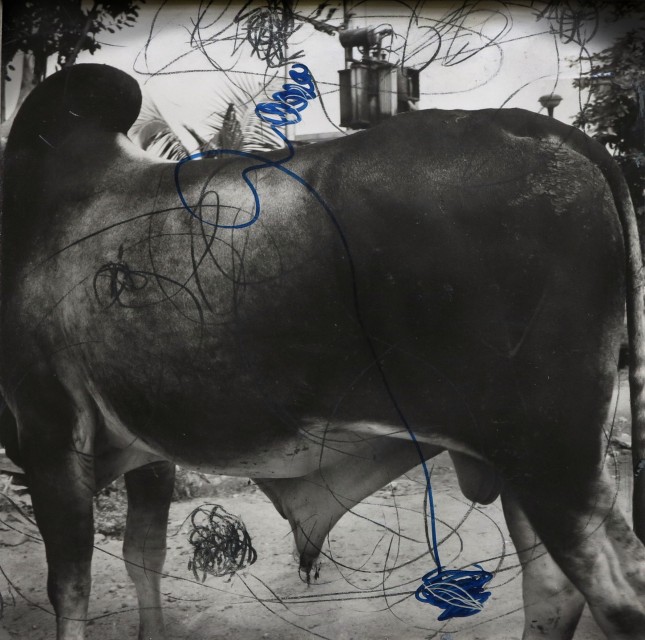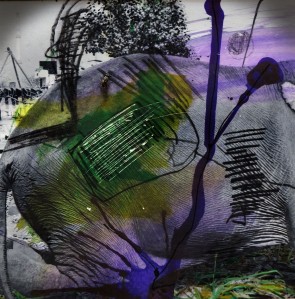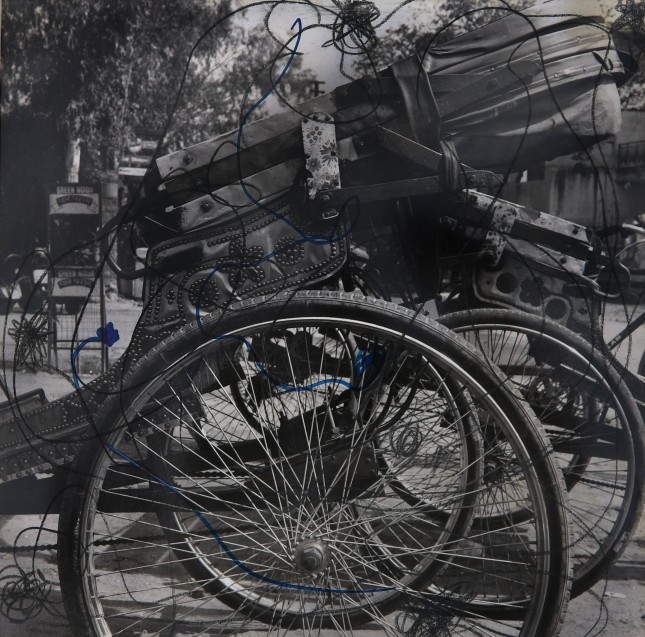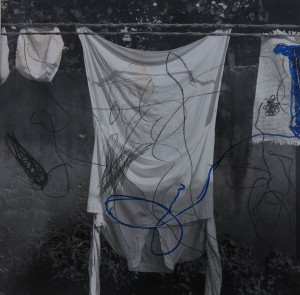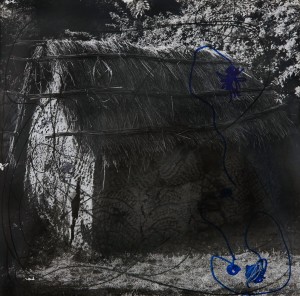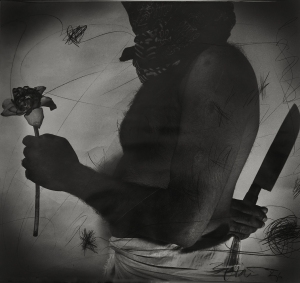{ In the year 1990s, I met Johny ML and Mrinal. Instantly, we became very good friends. During that time, I was preparing for a show titled ‘Violence undone’ to be shown at the photography gallery of Max Mueller Bhavan. Johny had completed his Art history and on the look for good opportunties. Those times, the art world was indeed very quiet and photography was not a big bandwagon. There were not that many write-ups on photography as well. I asked them to write a piece on photography to be printed in the catalogue. This article was and is one of the most important write-ups on contemporary Indian photography. Time has changed and Johny is now one of the youngest art historians in India. He writes regularly and uses the online social media networks effectively. He discusses and deliberates on contemporary art issues in his blog http://johnyml.blogspot.in. Thank you Johny and Mrinal. }
Photography plays a double role in society as an image-making entity. On the one hand it traces an existing reality, and on the other it creates a reality of its own. By the third decade of the 19th century, photography started tracing the surroundings within painterly frames. Since then, irrespective of the models objectified by photography, it has been haunted by the ghost of painting. But certain radical approaches introduced by some exclusive photographic artists released this art form from the captivity of painting. Later on, it could exercise a sort of commanding force on other visual arts (as in Dadaism, Surrealism, Futurism, Constructivism, Kinetic art, Optic art, etc).
At present, a talk on photography cannot be stretched to the extremes of formal plays. The social role it performs as an image-making entity has to be seen in certain critical perspectives. Image making is a political as well as an economic activity. In modern societies, production and consumption play a chief role. The act of mediation done by ‘images’, helps the product to reach the maximum number of consumers. Susan Sontag, in her book ‘On Photography’, says that the image determines our demands upon reality and are themselves coveted substitutes for first hand experience.
While Sontag talks about the power politics or political (as well as sociological) power of photography, Roland Barthes approaches it in purely phenomenological terms. To him, photography is another form of death. The surface of a photograph is a layer which distances it from the living society. In turn, by enacting the role of an observer, society detaches itself from the photographic image with its own outer layer, i.e. the skin.
This distancing process is continued in the act of photography too. The experience of photography lies in the observed subject and the subject observing. Again Barthes stresses this dual experience in terms of pure objectification. The role changes happen in the observed subject and the subject observing. This eventually makes the resultant experience (the photograph) a museum object.
The different forces that underlie the act of observation and the experience of “being observed” become clearer in portrait photography. Barthes says in ‘Camera Lucida’: “Portrait photography is a closed field of forces. Four image repertories interest here, oppose and intersect each other. In front of the lens, I am at the same time the one I think I am, the one I want others to think I am, the one the photographer thinks I am, and the one he make use of, to exhibit his art.
John Berger approaches photography in sociological terms. From the characters, captured in a photograph, he deduces several social meanings: their social positions and individual positions. These different approaches by three eminent critics make us think more on this medium of art as an exclusive genre. With far advanced technologies, our times produce photographs instantly and for various purposes. It would be interesting to see the role of photography in contemporary society.
As a mode of communication, photography plays a dominant role in our image-saturated world. Our communication media is so saturated that most of the images coming cut out remain excess and floating. They impose rather then guide. The over-abundance of image makes the intended meaning banal.
In this atmosphere of total banality, how does an image work effectively? Besides its power of creating an unreal demand, how does it precisely create a real understanding of the message which it carries? The difference between the banality of an image and its power of communication is very subtle. Therefore, the artist who works with an image, especially in that of a photograph, should be extremely careful in discerning this subtlety.
Thanks to scientific advancement, the field of photography (the camera as a physical device and the film as a comical one) has attained an unprecedented progress in recent years. Its use in cinema and computerised visuals has revolutionised all the pre-existing concept of photography. The observations made by Barthes, Sontag and Berger, find their respective limitations in the present visual arena. Though these theories are still applicable, the day to day progress in photography demands a more radical approach in its uses (by creative artists) as well as its reading (by critics).
Abul’s photographs (or work with photographs?) necessitate such a different approach for their successive readings. There is something blasphemous in the conversion of a news photographer into an artist who uses photographs for his creative expression. The blasphemy lies in his bold attempt to subvert the common norms attributed to a photo journalist. The masters in Indian photography most often follow a set pattern. “Photography makes exotic things familiar and familiar things exotic”, says Sontag, “and therefore has a depersonalizing effect.” This depersonalisation of Indians, whether from rural and metroscapes, by the ‘masters’ made India an object of consumption.
Abul’s photographs negate this kind of objectification. He has taken photographs of the ethnic type not only in India but also abroad. He has portrayed the working boys in Mumbai streets as well as the monumental sculptures (of bygone luminaries) in Mumbai city squares. But his specific selection of angels prevents them from being museum objects or exotic pieces.
Photography itself is a violation of the privacy of somebody or something. The clicking sound of a camera shutter is analogous of a death knell. In the act of photography, Abul says, a violation and a killing happen simultaneously. Once these chemicals impressions are presented as they are, it would be a reassertion of violation. But Abul makes another violation on the photograph, which is already a result of the primary violation.
Abul draws on photographs. The act of scratching and drawing certain images, mainly images of violation like sword, torch, etc., on photographs brings forth a sort of witchcraft. Violation is vigorous, and the result could be a resurrection. Hence the two-dimensional works of Abul find their way directly into the discourse of contemporary social life. He negates the negation, and violates the violation. So the resultant works oscillate between the social dialectics; creation and destruction, spiritualism and fundamentalism, pacifism and fascism.
Deriving a homogeneous opinion about Abul’s works is a difficult matter. Due to the diversity in the process of work, arrangement and presentation, these works fall in and out of a logical groove. The difficulty that Abul finds at times in positioning his works as well as himself in the current art discourse seems mainly because of his overindulgence with Barthesian ideas.
By comprehending his subjectivity historically and its interaction with social and art practice politically, Abul could make his peripheral strategies politically clear in the current discourses. If Abul is able to keep this perspective intact and work persistently, he could bring the matter in the mainstream discourses on peripheral issues.
By,
Johny M.L. and Mrinal M.Kulkarni
This article was originally published in the catalogue of the show, Violence Undone, 1996. The solo show was done at Photography Gallery of Max Mueller Bhavan, New Delhi.
(C) All rights reserved. All the images published in this blog is copyrighted property of contemporary Indian photographer Abul Kalam Azad. Text (C) Johny ML and Mrinial Kulkarni. Reprinting / publishing rights reserved by the author and prior permission is required for reproduction / re-publishing, For more information call {0}4175 237405 / {0}94879 56405 or mail to ekalokam@gmail.com / FACEBOOK – Abul Kalam Azad

